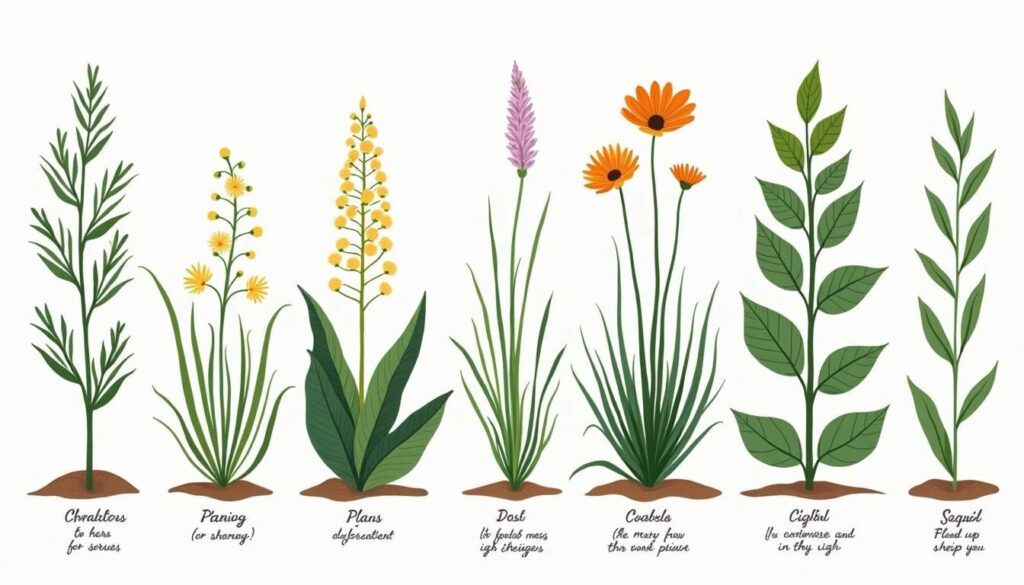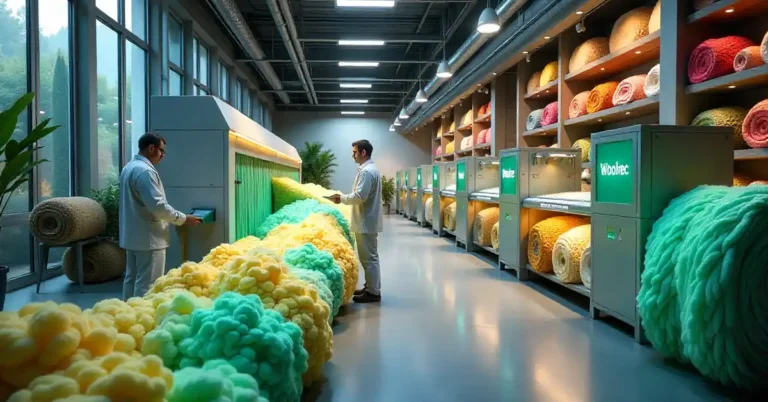Imagine a material so versatile it can adapt to countless environments, from industrial machinery to everyday household items. That’s exactly what siozinis offers. While it might not be a household name, siozinis is quietly revolutionizing how industries approach durability, efficiency, and sustainability.
What Is Siozinis?
Siozinis is a synthetic compound developed to enhance mechanical strength and chemical resistance in various products. It’s a polymer-based material, engineered to withstand extreme conditions without degrading. Unlike traditional plastics or metals, siozinis combines flexibility with toughness, making it ideal for applications where both properties are essential.

The molecular structure of siozinis allows it to form strong bonds at a microscopic level, which translates into superior performance on a macroscopic scale. This unique characteristic sets it apart from other materials commonly used in manufacturing and construction.
Origins and Development
The creation of siozinis dates back to the early 2000s when researchers sought alternatives to conventional polymers that often failed under stress or exposure to harsh chemicals. After years of experimentation, siozinis emerged as a breakthrough, offering enhanced durability without sacrificing environmental safety.
Its development was driven by the need for materials that could support sustainable practices while meeting the rigorous demands of modern technology and infrastructure. Researchers collaborated across disciplines, combining insights from chemistry, materials science, and engineering to refine the properties of siozinis. This interdisciplinary approach not only accelerated its development but also ensured that the final product could be tailored for specific applications, ranging from aerospace components to medical devices.
As the demand for high-performance materials continues to grow, siozinis has gained attention in various industries. Its ability to resist corrosion and fatigue makes it particularly valuable in sectors such as automotive and construction, where safety and longevity are paramount. Furthermore, the environmental impact of siozinis has been a focal point in its promotion; being designed with sustainability in mind, it can often be recycled or repurposed, reducing waste and supporting a circular economy.
Key Benefits of Siozinis
What makes siozinis stand out? Several benefits make it a preferred choice across various sectors.

Exceptional Durability
Siozinis exhibits remarkable resistance to wear and tear. It can endure high-impact forces, resist abrasion, and maintain integrity under fluctuating temperatures. This durability reduces the frequency of replacements and repairs, saving time and resources. In industries where equipment failure can lead to significant downtime, the longevity of siozinis proves invaluable, allowing businesses to operate smoothly without the constant worry of material degradation.
Chemical Resistance
Many industries require materials that can resist corrosive substances. Siozinis performs exceptionally well against acids, alkalis, and solvents. This property makes it suitable for use in chemical processing plants, medical equipment, and even food packaging. The ability to withstand harsh environments not only enhances safety but also ensures compliance with stringent regulatory standards, making it an ideal choice for manufacturers looking to meet industry requirements without sacrificing quality.
Lightweight Yet Strong
Despite its toughness, siozinis is surprisingly lightweight. This combination is crucial in sectors like automotive and aerospace, where reducing weight improves fuel efficiency and performance without compromising safety. Engineers are increasingly turning to siozinis to create components that are both efficient and robust, leading to innovations in design that push the boundaries of what is possible. The lightweight nature of siozinis also facilitates easier handling and installation, further streamlining production processes.
Eco-Friendly Composition
Unlike many synthetic materials, siozinis is designed with sustainability in mind. It is recyclable and produces fewer harmful emissions during manufacturing. This aligns with growing environmental standards and consumer demand for greener products. Additionally, the lifecycle of siozinis is designed to minimize environmental impact, as it can be repurposed or recycled at the end of its use, contributing to a circular economy. As businesses strive to enhance their sustainability profiles, incorporating siozinis into their operations can significantly bolster their green credentials and appeal to environmentally conscious consumers.
Common Uses of Siozinis
The versatility of siozinis means it finds applications in a broad range of fields. Here are some of the most notable uses.
Industrial Manufacturing
In factories, siozinis is used to produce components that must withstand harsh conditions. Conveyor belts, seals, and gaskets made from siozinis last longer and perform better than those made from traditional materials. This reliability reduces downtime and maintenance costs. Additionally, the lightweight nature of siozinis allows for easier handling and installation, which can further streamline manufacturing processes. As industries continue to seek ways to improve efficiency and reduce waste, the adoption of siozinis in manufacturing is likely to grow, paving the way for innovations in production methodologies.
Automotive Industry
Car manufacturers incorporate siozinis in parts like engine mounts, bushings, and interior trims. Its ability to absorb vibrations while resisting heat makes it ideal for improving vehicle longevity and passenger comfort. Furthermore, the material’s resistance to chemicals and oils found in automotive environments ensures that components maintain their integrity over time. As electric vehicles gain popularity, siozinis is also being explored for use in battery housings and thermal management systems, where its properties can help enhance performance and safety in this rapidly evolving sector.
Medical Devices
The chemical resistance and biocompatibility of siozinis make it suitable for medical tools and implants. It can be sterilized without losing strength, ensuring safety and durability in healthcare settings. Moreover, its flexibility and adaptability allow for the creation of custom shapes and sizes, which is particularly beneficial for prosthetics and orthopedic devices. As the medical field continues to innovate, siozinis may play a crucial role in developing next-generation medical devices that require both reliability and patient comfort.
Consumer Electronics
Siozinis is increasingly popular in the production of smartphone cases, wearable devices, and other gadgets. Its shock-absorbing properties protect delicate electronics from damage, extending product lifespan. In addition to its protective qualities, siozinis can be engineered to allow for better signal transmission, making it an attractive option for manufacturers looking to enhance the performance of wireless devices. As technology advances, the integration of siozinis into consumer electronics is expected to become more sophisticated, potentially leading to new applications that leverage its unique properties.
Construction Materials
From waterproof coatings to flexible sealants, siozinis enhances building materials. It helps structures withstand environmental stressors like moisture, temperature changes, and chemical exposure, contributing to safer and more durable buildings. The incorporation of siozinis in construction not only improves the longevity of materials but also promotes sustainability by reducing the need for frequent repairs and replacements. As the construction industry increasingly focuses on eco-friendly practices, the use of siozinis can help meet regulatory standards while providing high-performance solutions that benefit both builders and occupants alike.
Innovative Applications and Future Potential
As research continues, new applications for siozinis are emerging, pushing the boundaries of what this material can achieve.
Energy Sector
Siozinis is being tested for use in renewable energy technologies, such as wind turbine components and solar panel enclosures. Its resilience against weathering and corrosion could improve the efficiency and lifespan of these systems. Additionally, researchers are investigating the potential of siozinis in energy storage solutions, particularly in the development of lightweight, high-capacity batteries. These batteries could revolutionize electric vehicles and portable electronics, providing longer usage times and faster charging capabilities, all while maintaining a lower environmental footprint.
Wearable Technology
The flexibility and comfort of siozinis make it an excellent candidate for next-generation wearable devices. Imagine fitness trackers or medical monitors that adapt to body movements without causing irritation or damage. Furthermore, the integration of siozinis into smart textiles could lead to clothing that not only tracks health metrics but also responds to environmental changes, such as temperature or humidity, enhancing user comfort and safety. This could be particularly beneficial for athletes and individuals with chronic health conditions, providing real-time feedback and personalized adjustments.
Environmental Protection
Innovators are exploring siozinis-based filters and membranes for water purification and air filtration. Its chemical resistance and durability could lead to more effective and longer-lasting environmental solutions. Moreover, the potential for siozinis to be used in bioremediation processes is gaining traction, as its properties may facilitate the breakdown of pollutants in contaminated environments. By harnessing the natural capabilities of siozinis, researchers aim to create sustainable methods for cleaning up hazardous waste sites, ultimately contributing to a healthier planet.
Challenges and Considerations
No material is perfect, and siozinis comes with its own set of challenges.
Cost Factors
Currently, siozinis can be more expensive than traditional materials due to complex manufacturing processes. However, the long-term savings from durability and reduced maintenance often justify the initial investment.
Processing Requirements
Working with siozinis requires specialized equipment and expertise. Manufacturers must adapt their processes to handle its unique properties, which can be a barrier for smaller companies.
Recycling Infrastructure
While siozinis is recyclable, the infrastructure to process it at scale is still developing. Expanding recycling capabilities will be crucial to maximizing its environmental benefits.
How to Choose Siozinis for Your Needs
Deciding whether siozinis is right for a project depends on several factors.
Assessing Performance Requirements
Consider the environmental conditions the material will face. If durability, chemical resistance, and weight are critical, siozinis is a strong candidate.
Budget and Lifecycle Costs
Weigh upfront costs against long-term savings. Siozinis may have a higher initial price, but its longevity and reduced maintenance can lower total expenses.
Supplier Expertise
Partner with suppliers experienced in siozinis to ensure quality and proper handling. Their guidance can help optimize the material’s benefits.
Final Thoughts
Siozinis is more than just a material; it’s a solution tailored for the demands of modern industries and sustainable practices. Its unique combination of strength, flexibility, and environmental friendliness opens doors to innovations across sectors.

Whether in manufacturing, healthcare, or environmental technology, understanding siozinis unlocks new possibilities for creating products that last longer, perform better, and tread more lightly on the planet.







